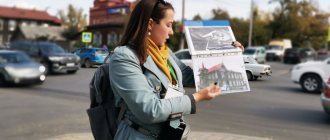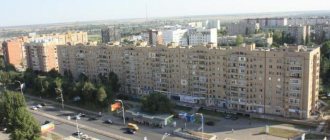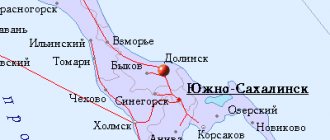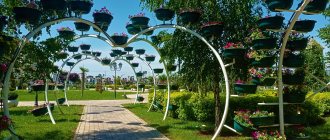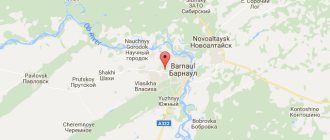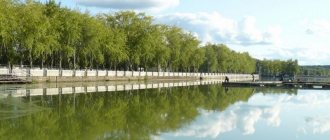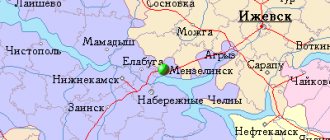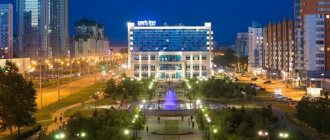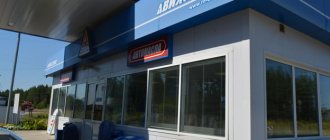Where is Barnaul located? What is the city famous for and how to get there? You will find answers to these and other questions by reading the article. In 1937, the Altai Territory was formed on the territory of the Russian Federation, where the city of Barnaul officially became the administrative center. Where is? The city is located on the banks of the Barnaulka River (the left tributary of the Ob River).
The article tells about the formation of this settlement and its attractions that attract the attention of guests and tourists interested in the history of Russia.
History of the city name
There are several versions of the city's name. The Siberian archaeologist Alexei Umansky at one time developed a version that states that since this region was once inhabited by a small Turkic people (Teleuts), the name came from the word “porongyul”. In translation it means: “porongy” - muddy water, and “ul” - river. This version is confirmed by the fact that in fact R. Barnaulka, on the banks of which the city stands, has muddy water. It is like this because of the large amount of organic and mineral substances mixed with river sand.
In topographic maps of the 18th century, the river was called Boronoul. Professor from Tomsk Dulzon gave an explanation. He said that the name of the geographical object consists of two words - “boro” (translated from Turkic as wolf) and “ul” (river). Thus, "Wolf River".
This professor confirms with documents that wolves lived in this region.
The most reliable version is considered to be the opinion of many historians who believe that the name is associated with the Barnaulka River.
Barnaul on the map of Russia - where it is located. Geography of the city
Barnaul on the map of Russia is located in the northern part of the Altai Territory, in the south of Western Siberia, on the left bank of the Ob, at the confluence of the Barnaulka River.
Distance from Barnaul to major cities by road:
- Moscow – 3610 km to the northwest,
- Omsk – 880 km to the northwest,
- Krasnoyarsk – 940 km to the northeast,
- Novosibirsk – 240 km to the north,
- Semipalatinsk – 450 km south,
- Novokuznetsk - 410 km to the east.
Barnaul is located in the forest-steppe zone, in the southwest it is adjacent to a pine forest, and around the city there are birch and aspen groves.
The topography of the city is the Priobskoe plateau, with a height within the city ranging from 130 to 250 meters, with depressions and ravines.
The climate of Barnaul is moderate and sharply continental, with an average annual temperature of +3 °C. Winter is frosty and snowy, lasting from early November to late March, the average temperature in January is -15 °C. Summer is warm and moderately humid, the duration of summer usually coincides with its three calendar months, the average temperature in July is +20 °C. Approximately 430 mm of precipitation falls annually, the maximum of which occurs in July (68 mm) and the minimum in February (18 mm).
History of Barnaul. Where is this area located?
In 1739, mining entrepreneur Akinfiy Demidov (son of the founder of the Demidov dynasty, Nikita Demidov), began construction of a copper and silver smelter, around which the Ust-Barnaul workers' village was formed on the site of the future regional center. Five years later, the plant began producing steel products.
Migrant workers from the regions of Central Russia and the Urals began to arrive in the village. Then the village, which became known as Barnaul, received the status of a mountain city in 1771. Urban infrastructure began to develop there. By 1893, natural resources were practically depleted, which led to the closure of the enterprise, and the city became one of the major merchant (trading) centers of Tsarist Russia.
After the revolutionary events of 1917, Barnaul became the center of the agro-industrial region. During the Second World War, more than a hundred major industrial enterprises from many cities in the front-line zones were evacuated to Barnaul (where the city is located, as was already mentioned above).
Now the main city of the Altai Territory, covering an area of 330 km², where more than 660 thousand indigenous people live, is considered industrial with a developed tourist infrastructure. The management of the travel agency organizes daily walking tours of the city, which has many interesting places that attract the attention of tourists and guests of the city.
Modern history
The city is famous for its theaters. Not every regional center has so many of them; in addition, they are located in very original buildings, which gives them additional charm.
The first local history museum beyond the Urals was opened in Barnaul in 1823. And in 2012, a one-of-a-kind “Mountain Pharmacy” was opened in a building that is a historical monument. There are modern museums, one of them is dedicated to V. M. Shukshin, a native of these places. One of the regional drama theaters is named after him. Barnaul is a prosperous, modern city.
Demidovskaya Square
The walking tourist excursion begins with the main attraction of the city - Demidov Square. It is located in the central part
In 1818, the managers of the Kolyvan-Voskresensky factories, Pyotr Frolov, proposed creating a square in Barnaul where an obelisk could be erected in honor of the 100th anniversary of the start of mining in the Altai region.
Initially the square was called Konyushennaya. Then it changed its name several times.
From 1992 to the present time, the main square of Barnaul is called Demidovskaya in honor of the founder of the city, Akinfey Demidov. Now it looks about the same as it did in past centuries.
Tourists can explore the buildings of the mountain hospital, mining school and home for the disabled. All these buildings date back to different years of the 19th century and have retained their original appearance.
Barnaul
Video: Barnaul
Basic moments
The beautiful nature of Altai, clean air, mountainous and hilly landscapes, many rivers, lakes, untouched forests and mysterious caves - all this attracts travelers to Barnaul. Both nature lovers and sports lovers will find themselves here.
Barnaul is a city with an area of 332 square kilometers, divided into Oktyabrsky, Leninsky, Central, Industrial and Zheleznodorozhny districts. The city has developed infrastructure, transport network, and communications. Barnaul has many theatres, museums, parks, libraries and cinemas and other entertainment places that travelers can visit.
The name of the city comes from Turkic languages. The Barnaulka River got its name by combining two words of the Turkic language: “boro” and “ul”, which means “wolf” and “river”, Barnaulka - “wolf river”. And in fact, there used to be wolves near this river. Over time, the name of the river gave its name to the city on its banks.
Climate
The climate in Barnaul is sharply continental. Barnaul is characterized by moderate, severe, frosty winters with little snow and comfortable summers with warm weather. The coldest month of the year for Barnaul is January (average temperature is -17 degrees Celsius). On average, 539 millimeters of precipitation falls per year, most of it falls in April-October.
On average there are 130 cloudy, 49 clear and 186 semi-clear days a year. The duration of sunshine in the city of Barnaul is 2180 hours per year.
Attractions
Barnaul has many attractions that are worth visiting. The city has many museums with exhibitions on the development of peoples, culture, and art in the region - the Altai Museum of Local Lore, the Museum of History, Literature and Art, and the Altai Art Museum. Here you will see minerals mined in the vicinity of Barnaul and Altai, works by artists of the region, and various thematic halls. There are also contemporary art galleries.
The theaters of Barnaul cannot be ignored. Visit the musical comedy theater, the Altai theater named after Shukshin, and the Altai youth theater. Children can watch puppet shows at the Altai State Puppet Theater “Skazka”.
If you are an avid movie buff, then Barnaul can provide you with an excellent vacation. There are many cinemas in the city: the entertainment complex "Mir", "Rodina", "Kinomir", the shopping center "Europe" and the shopping center "Lights" will delight you with the quality of films, service and all the latest cinema releases.
Don't forget to visit Demidovskaya Square - the main attraction of Barnaul. This is an architectural ensemble created according to the type of St. Petersburg buildings. In honor of the 100th anniversary of mining, the Demidov pillar was erected in the center of the square. The oldest streets of the city adjoin the square. One of them is Polzunov Street. Walking along this street you will see buildings from the 18th and 19th centuries. For example, the Chancellery Building of the Resurrection Factories. The building is a rare Siberian architectural monument of the 18th century. Now the building houses a folk art center.
Next to the Chancellery building is another landmark of Barnaul - the building of the former tool store of the Barnaul plant. This two-story brick building formerly housed the storage facilities of a silver smelter. You can admire the stone fence with decorative porticoes, which is pleasing to the eye.
If we walk further along Polzunov Street, we will see the building that formerly housed the Mining Laboratory. Now the Altai State Museum of Local Lore is located here, the oldest in Siberia.
Freedom Square is the oldest in the city. It is located in the historical center of Barnaul. There is a beautiful park around the square; folk festivities and holidays take place on the square.
On Tolstoy Street there are many merchant houses: the store of the merchant Morozov, the Smirnov passage, the Polyakov trading house (now the Krasny department store).
Polyakov's trading house is a two-story U-shaped building. It was built in the Russian style - red brick, masonry, shape, symmetry and rhythm of the facades, metal brackets.
The People's House Building houses a theater, a library, and various studios. The building is also made in the Old Russian style.
The house of merchants Yakovlev and Polyakov is a monument of federal significance and the most famous landmark of Barnaul - a two-story building with a stone semi-basement and a complex roof. Fits perfectly into the historical appearance of the city.
Story
Barnaul is the oldest city in Western Siberia and dates back to the 1730s during the discovery of mineral deposits in the area. The city began with the construction of the Kolyvano-Voskresensky plant.
At the end of the 18th century, factories depended on water and forests, so the Kolyvano-Voskresensky plant for the extraction and processing of minerals was built on the banks of the Barnaulka River. Copper and silver deposits were found near the city.
From the plant near the future Barnaul, about 450 pounds of silver were supplied to the state treasury annually.
Many famous travelers and researchers went to Barnaul; famous craftsmen, architects, and artists worked here. For example, P.P. Semenov-Tyan-Shansky will call Barnaul “Siberian Athens” for its culture and beauty.
Due to the abolition of serfdom, depletion of deposits and other reasons, the plant closed in 1893, and life in the city practically came to a standstill. But in 1911, the city's production activities changed. In Barnaul they have always been engaged in agriculture: butter making, fur coats (illegally), and felt boots (of different colors and patterns).
In 1864, a soda factory appeared in the city - the first in Russia. There were also breweries, bakeries and sausage factories.
In May 1917, the city burned down, since the buildings were almost all made of wood, the city turned into ruins. In the next three years, civil wars took place here, and in the twenties the city slowly rose from the ruins. Many buildings have not yet been restored.
In 1932, construction of a melange plant and a “social town” began, which moved the city forward. Schools, hospitals, cinemas, and residential areas appeared. In the thirties, all the churches of Barnaul were destroyed, depriving the city of its most ancient cultural monuments.
During the Second World War, more than a hundred military industry enterprises were built in Barnaul. From here, diesel engines for tanks, oxygen breathing equipment for pilots, and clothing went to the front line.
The chemical industry developed in the city, and factories in this industry were created here. The city expanded more and more with the construction of new residential areas, the city retreated from the Ob.
Now Barnaul is a modern city, both ancient monuments have been preserved here, and new high-rise buildings and modern comfortable buildings are being built.
Accommodation
When coming to Barnaul, you can stay in hotels of different price categories. There are both luxury hotels and hotels with inexpensive rooms.
Most Barnaul hotels offer free Wi-Fi, which will be very useful for young people and businessmen who always need to be in touch.
Many hotels include a full breakfast in their room rates.
Mid-price rooms usually have a bathroom, TV, and refrigerator.
You will definitely be given a pleasant-to-touch robe, slippers, and bath amenities.
Also, each of the hotel visitors can visit the spa salons, swimming pool, sauna and bathhouse.
Many hotels in Barnaul offer transport services: you can be transported from the airport to the hotel and back for a fee.
You can visit the bar and restaurant.
Small children can be left with a nanny, and a car can be rented.
Transport
You can get around Barnaul by taxi, which can be ordered from the hotel. Taxis will take you to any area of the city.
You can also move around the city by buses and minibuses. The fare is about 12-15 rubles. There are 9 tram routes and 3 trolleybus routes in the city.
At the river station you can buy tickets to ride along the Ob and look at the city or go to the neighboring cities of Altai.
Souvenirs
When visiting Barnaul, do not forget to buy souvenirs. In Barnaul there are many products, jewelry and figurines made from minerals, precious metals and other minerals of Altai. You can buy magnets with images of the city, photographs, and products from Barnaul craftsmen as souvenirs from Barnaul. You can buy souvenirs in the historical part of the city, in museum shops and souvenir shops.
How to get there
By air: Barnaul airport is located seventeen kilometers from the city center. The airport receives flights from Blagoveshchensk, Krasnoyarsk, Irkutsk, Nizhnevartovsk, St. Petersburg, Sochi, Surgut and Moscow.
By rail: direct trains from Moscow, Novosibirsk, Irkutsk, Central Asia and Kazakhstan. As well as routes with transfers.
By bus: from neighboring cities and republics, from Kazakhstan.
By river transport: from neighboring cities along the Ob and Barnaulka rivers.
Altai Museum of Local Lore
On Polzunov Street there is the Altai State Museum of Local Lore. It is considered the first in Western Siberia. The opening took place in 1923.
The idea belonged to the manager of mining factories in the Barnaul region, Pyotr Frolov, and the naturalist scientist Friedrich Gebler. At that time the museum was called the “Mountain Museum”.
The exhibition was based on models of mining machines and various mechanisms of mining production and an extensive collection of minerals from the Urals.
Of great interest to visitors is the inspection of the first steam engine of the Russian inventor Ivan Polzunov. In 1766, this outstanding man built the first heat engine (steam engine) in Russia, which he invented, on the banks of Barnaulka.
Tourists are given the opportunity to examine models of industrial machines of the 18th-19th centuries and other various mining equipment of those times.
Mountaineering and trekking
While the central part of the region is predominantly a low-lying and flat area with water meadows, the outlying territories of the Altai Territory, on the contrary, provide athletes with wonderful opportunities for training and real ascents to the Altai Mountains. From their peaks you can see uniquely beautiful views of the surrounding landscapes, which belong to the systems of the West Siberian Plain and the Altai-Sayan mountain system.
For those who are not ready to take risks or do not have sufficient physical fitness, local tourist guides and specialized companies offer both group ascents to low altitudes and long walking routes along mountain ridges.
Museum of Auto Theft named after. Yuri Detochkina
On Koptevskaya Street, in the building of the Favorit Motors car dealership, a kind of museum has been operating since 2003. It has become popular among tourists - the auto theft museum, named after the main character of the comedy "Beware of the Car". There is an exhibition of various master keys and devices used by car thieves in the city.
The museum was created on the initiative of the regional rescue service. She subsequently provided him with all the videos of the traffic accidents. Visitors can watch them in a specially equipped cinema hall.
Museum "City"
Having figured out where Barnaul is located, we’ll tell you about its other main attraction. At the corner of Lev Tolstoy Street and Lenin Avenue there is a building built in 1916, which at one time housed the City Duma.
Now the exhibitions of the City Museum are located here. Here, guests of the city, having visited it, can get acquainted with the history of Barnaul and the life of people whose activities are connected with the development of the region.
The main part of the collection consists of works of fine art of the 19th-20th centuries and an exhibition of archaeological finds from Altai.
Links[edit]
Footnotes [edit]
- ^ abcde Law No. 28-ZS
- ↑
According to Article 5 of the Barnaul Charter, the official symbols of the city, archived on February 24, 2021 at the Wayback Machine, include only the flag and coat of arms. - ^ abc Charter of Barnaul, article 4
- ^ abc Encyclopedia of Russian Cities
. Moscow: Great Russian Encyclopedia. 2003. pp. 36–38. ISBN 5-7107-7399-9. - Charter of Barnaul, article 37
- Official website of Barnaul. City Administration Archived June 22, 2021, at the Wayback Machine (in Russian)
- Charter of Barnaul, article 46
- Official website of Barnaul. Geography archived June 2, 2021, in the Wayback Machine (in Russian)
- ^ abc Federal State Statistics Service (2011). “All-Russian Population Census 2010. Volume 1" [All-Russian Population Census 2010, vol. 1]. All-Russian Population Census 2010 [All-Russian Population Census 2010]
. Federal State Statistics Service. - https://www.gks.ru/free_doc/doc_2018/bul_dr/mun_obr2018.rar ; archived date: July 26, 2021; received: July 25, 2021; Archive URL: https://web.archive.org/web/20180726010024/https://www.gks.ru/free_doc/doc_2018/bul_dr/mun_obr2018.rar.
- ^ a b Charter of the Altai Territory, Article 6
- ^ abc Law No. 144-ZS
- "On the Calculation of Time". Official Internet portal of legal information
. June 3, 2011. Retrieved January 19, 2021. - Post office. Information and computing center of OASU RPO. ( Post office
).
Search for postal service objects ( postal Search for objects
) (in Russian) - ↑
Federal State Statistics Service of Russia (May 21, 2004).
“The population of Russia, the constituent entities of the Russian Federation as part of federal districts, urban settlements, settlements, settlements of 3 thousand or more people” [Population of Russia, its federal districts, federal districts, districts, urban settlements, rural settlements - administrative centers and rural settlements with a population of more than 3,000 people] (XLS). All-Russian Population Census 2002
. - “All-Union Population Census of 1989. The current population of union and autonomous republics, autonomous regions and districts, territories, negative phenomena, urban settlements and rural district centers” [All-Union Population Census of 1989: current population of union and autonomous republics, Autonomous regions and districts , territories, regions, districts, urban settlements and villages performing the functions of district administrative centers. All-Union Population Census of 1989 [All-Union Population Census of 1989]
.
Institute of Demography of the National Research University: Higher School of Economics [Institute of Demography of the National Research University: Higher School of Economics]. 1989 - via Demoscope Weekly
. - “All-Union Population Census of 1979. National composition of the population by regions of Russia” [All-Union Population Census of 1979. Ethnic composition of the population by regions of Russia] (XLS). All-Union Population Census of 1979 [All-Union Population Census of 1979]
.
1979 - via Demoscope Weekly
(website of the Institute of Demography of the State University - Higher School of Economics. - Minns, Ellis Howell (13 January 2011). Scythians and Greeks: a survey of ancient history and archeology on the northern coast of the Euxine Sea from the Danube to the Caucasus. Cambridge University Press. ISBN 9781108024877. Retrieved January 1, 2021 - via Google Books.
- "Fifth Wartkin Readings". new.hist.asu.ru.
_ Archived from the original on July 25, 2012. Retrieved January 1, 2021. - Sanborn, Josh. "Mobilization of 1917 and the question of the Russian people." Slavic Review,
vol. 59, no. 2: pp. 267–89. - ^ a b Lambert, Gavin (2004). Natalie Wood: A Life,
London: Faber and Faber, p.8. ISBN 978-0-571-22197-4 - [1]
- "Archival copy". Archived from the original on October 27, 2012. Retrieved 28 March 2015.CS1 maint: archived copy as title (link)
- "Barnaul". Encyclopedia Britannica
. Retrieved November 8, 2021. - "Weather and climate - climate - Barnaul" (in Russian). Retrieved May 14, 2015.
- "Climate norms for Barnaul". National Oceanic and Atmospheric Administration. Retrieved January 23, 2013.
- “Sergei Shubenkov won” gold at the World Athletics Championships in Beijing. Retrieved January 1, 2021.
- “USA, Spain and China: in what other countries does Barnaul have sister cities?” . tolknews.ru
(in Russian). Plot. October 31, 2021. Retrieved November 30, 2020. - “The city of Shumen - No matter what you decide.” tourism-shumen.com
(in Bulgarian). Tourism Shumen. Retrieved July 14, 2020.
Sources [edit]
- Barnaul City Duma. Decision No. 789 of June 20, 2008 “Charter of the urban district - the city of Barnaul, Altai Territory,” as amended. Decision No. 766 of March 31, 2021 “On amendments to the Charter of the urban district - the city of Barnaul, Altai Territory (as amended by Decision No. 706 of December 16, 2016).” Came into force on the date of official publication (July 15, 2008) (subject to certain provisions that entered into force within the specified periods). Published: “Evening Barnaul”, No. 103, July 15, 2008 (Barnaul City Duma. Decision No. 789 of June 20, 2008. Charter of the urban district - the city of Barnaul, Altai Territory,
as amended by decision No. 766 of March 31, 2021 “
About amendments to the Charter of the urban district - city").
Barnaul, Altai Territory (edition No. 706 of December 16, 2021) . Effective from the date of official publication (July 15, 2008) (except for paragraphs that come into force on other dates). - Altai Regional Legislative Assembly. No. 3-ZS June 5, 1995 “Charter (Basic Law) of the Altai Territory,” as amended. Law No. 118-ZS of December 1, 2015 “On amendments to the Charter (Basic Law) of the Altai Territory.” Published: “Altai Truth”, No. 100, June 14, 1995 (Legislative Assembly of the Altai Territory. No. 3-ZS dated June 5, 1995. Charter (Basic Law) of the Altai Territory
as amended by the Law of December 1, 2015 No. 118-ZS “
On amendments to the Charter (Basic Law) of the Altai Territory
).” . - Altai Regional Council of People's Deputies. Law No. 28-ZS of March 1, 2008 “On the administrative-territorial structure of the Altai Territory,” as amended. Law No. 16-ZS of April 4, 2021 “On the annexation of the Zheleznodorozhnaya Kazarma station 572 km to the Oktyabrsky village of the Oktyabrsky village council of the Kulundinsky district of the Altai Territory and amendments to certain laws of the Altai Territory.” Entered into force on March 8, 2008. Published: “Altaiskaya Pravda”, No. 67, March 8, 2008 (Council of People’s Deputies of the Altai Territory. Law of March 1, 2008 No. 28-ZS “ On the administrative-territorial structure of the Altai Territory”
as amended by Law No. 16-ZS of April 4, 2021
On the annexation of the Zheleznodorozhnaya Kazarma station 572 km to the Oktyabrsky village of the Oktyabrsky village council of the Kulundinsky district of the Altai Territory and on amendments to various laws of the Altai Territory
. Effective from March 8, 2008). - Altai Regional Legislative Assembly. Law No. 144-ZS of December 27, 2008 “On the status and boundaries of the municipal and administrative-territorial formation of the city of Barnaul, Altai Territory,” as amended. Law No. 44-ZS of July 2, 2009 “On amendments to Appendix 1 to the Law of the Altai Territory “On the status and boundaries of the municipal and administrative-territorial entity of the city of Barnaul, Altai Territory””. Came into force 10 days after the day of official publication. Published: “Altai Truth”, No. 5–6, January 15, 2009 (Legislative Assembly of the Altai Territory. Law No. 144-ZS of December 27, 2008 “ On the status and boundaries of the municipal and administrative-territorial formation of the city of Barnaul, Altai Territory
in ed. July 2, 2009
On amendments to Appendix 1 of the Law of the Altai Territory “On the status and boundaries of the municipal and administrative-territorial formation of the city of Barnaul, Altai Territory"
. Valid from the day that is 10 days after the day of official publication.).
Znamensky Monastery
The religious attractions of the city include the active women's Orthodox Znamensky Monastery. A wooden temple was erected on the site of the future religious building in 1754.
In 1778 this small building was dismantled. Then a church with two altars was built on its foundation.
80 years later, a modern stone building was erected on this site. It was consecrated in honor of the icon of the Mother of God “The Sign”. At that time, three Orthodox schools and a library functioned at the cathedral.
In 1937, the temple was closed and used as the state archive of the Altai region. After 55 years, the religious building was returned to the Russian Orthodox Church (Russian Orthodox Church).
According to the decision of the administration of the Russian Orthodox Church (Holy Synod), since 1994 the Znamensky Cathedral has been transformed into a functioning convent. Tourists can explore the territory of the shrine and attend the liturgy, which takes place daily at certain hours.
Intercession Cathedral
We already know where Barnaul is located. Let's talk about one more of its attractions. Since 1898, in the western part of the city, at the expense of the population, on the site of the old wooden Church of the Intercession, construction began on the red brick four-altar Church of the Intercession. The cathedral was consecrated in 1904 in honor of the Intercession of the Holy Virgin.
In 1937 the temple was closed. And its building was used for city needs, and the frescoes that decorated the temple interior and the bell tower were damaged. In 1944, at the request of the diocese of Barnaul, services were resumed in the church. Then the gradual restoration of the church began, which lasted until 1993.
During this time, frescoes based on religious paintings by artists Viktor Vasnetsov, Ivan Kramskoy and other Russian painters, a bell tower and the building of a Sunday Orthodox school for youth of the Barnaul region were restored. Now the Intercession Cathedral is a functioning temple and is open to everyone.
Famous people[edit]
- Andrey Svechnikov, ice hockey player; 2nd overall in the 2021 draft by the Carolina Hurricanes.
- Evgeni Svechnikov, Detroit Red Wings NHL prospect
- Maria Butina, political activist and alleged Russian agent
- Pyotr Kozmich Frolov, scientist and inventor
- Tatyana Kotova, Olympic champion in long jump
- Julia Neigel, singer, songwriter
- Ivan Nifontov, world champion and Olympic medalist in judo
- Alexey Novikov-Priboy, writer
- Ivan Polzunov, inventor, creator of the world's first two-cylinder engine
- Konstantin Shcherbakov, pianist
- Sergey Shubenkov, track and field athlete, 2015 world champion [27]
- Nadezhda Shuvaeva-Olkhova, Olympic basketball champion
- Alexey Smertin, former captain of the Russian national football team
- Rita Streich, coloratura soprano
- Nikolai Yadrintsev, researcher and archaeologist, among the discoveries - Orkhon writing, the capital of Genghis Khan, Karakorum.
- Mikhail Yakubov, professional ice hockey player in the NHL and KNL
- Mikhail Evdokimov, comedian, former governor of Altai Krai
How to get there?
Where is Barnaul located? In what area is the city located and how to get there? Those who want to relax in the nature of the Altai Territory, see the sights of the regional center - the city of Barnaul, and communicate with the hospitable indigenous population can use air services. The flight from Moscow will take approximately 4 hours.
You can also get from Moscow by train “Moscow-Barnaul” from Kazansky station. Travel time is 50 hours.
There is also an intercity bus service “Moscow-Barnaul” to Barnaul. Travel time is no more than 65 hours.
How to use the Barnaul map
Our map of Barnaul is available online and is ideal for:
- quickly build routes, including from other cities.
- search for the desired city street, vacation spot, attraction.
- studying the geographical location of Barnaul on the map of Russia.
The map is well detailed. It shows all the popular objects with their names. Often a map of Barnaul is needed in order to lay out routes not only within the city itself, but also from other populated areas of Russia. It will be useful for both local residents and tourists.
Cheap flights to Barnaul
| Where | departure date | Return date | Find a ticket |
| Novosibirsk | 23.12.2021 | 30.12.2021 | Tickets from 2,150 |
| Kemerovo | 22.12.2021 | 29.12.2021 | Tickets from 4,266 |
| Omsk | 26.12.2021 | 09.01.2022 | Tickets from 4,334 |
| Tomsk | 21.12.2021 | 25.12.2021 | Tickets from 5,198 |
| Krasnoyarsk | 21.12.2021 | 25.12.2021 | Tickets from 5,391 |
| Moscow | 16.01.2022 | 27.01.2022 | Tickets from 5,994 |
| Adler | 03.02.2022 | 11.02.2022 | Tickets from 8,154 |
| Ekaterinburg | 23.03.2022 | 26.03.2022 | Tickets from 8,667 |
| Saint Petersburg | 01.02.2022 | 16.02.2022 | Tickets from 9,000 |
| Volgograd | 28.01.2022 | 31.01.2022 | Tickets from 9,178 |
| Kazan | 16.01.2022 | 19.01.2022 | Tickets from 9,360 |
| Krasnodar | 18.04.2022 | 18.05.2022 | Tickets from 9,459 |
| Tyumen | 21.12.2021 | 23.12.2021 | Tickets from 9,743 |
| Ufa | 21.01.2022 | 23.01.2022 | Tickets from 9,927 |
| Samara | 18.01.2022 | 22.01.2022 | Tickets from 10,082 |
| Simferopol | 12.02.2022 | 26.02.2022 | Tickets from 10,429 |
| Anapa | 07.02.2022 | 17.02.2022 | Tickets from 10,510 |
| Rostov-on-Don | 14.01.2022 | 16.01.2022 | Tickets from 10,512 |
| Saratov | 29.01.2022 | 01.02.2022 | Tickets from 10,554 |
| Nizhny Novgorod | 15.01.2022 | 22.01.2022 | Tickets from 10,612 |
| Kaliningrad | 14.01.2022 | 22.01.2022 | Tickets from 10,642 |
| Permian | 16.01.2022 | 28.01.2022 | Tickets from 10,850 |
| Surgut | 19.02.2022 | 26.02.2022 | Tickets from 10,970 |
| Ulyanovsk | 06.02.2022 | 19.02.2022 | Tickets from 11,682 |
| Mineral water | 27.01.2022 | 31.01.2022 | Tickets from 11,796 |
| Vladikavkaz | 27.01.2022 | 31.01.2022 | Tickets from 11,977 |
| Cheboksary | 17.01.2022 | 20.01.2022 | Tickets from 12,196 |
| Murmansk | 28.01.2022 | 15.02.2022 | Tickets from 12,198 |
| Voronezh | 16.01.2022 | 30.01.2022 | Tickets from 12,217 |
| Makhachkala | 01.02.2022 | 05.02.2022 | Tickets from 12,427 |
| Stavropol | 08.02.2022 | 14.02.2022 | Tickets from 12,880 |
| Nizhnevartovsk | 01.02.2022 | 03.02.2022 | Tickets from 13,104 |
| Saransk | 21.01.2022 | 31.01.2022 | Tickets from 13,666 |
| Irkutsk | 20.12.2021 | 25.12.2021 | Tickets from 13,684 |
| Yaroslavl | 17.12.2021 | 23.12.2021 | Tickets from 14,039 |
| Lipetsk | 14.02.2022 | 28.02.2022 | Tickets from 14,300 |
| Arkhangelsk | 17.01.2022 | 23.01.2022 | Tickets from 14,741 |
| Kirov | 15.01.2022 | 18.01.2022 | Tickets from 14,831 |
| Naberezhnye Chelny | 14.02.2022 | 21.02.2022 | Tickets from 14,907 |
| Chelyabinsk | 18.12.2021 | 22.12.2021 | Tickets from 14,968 |
| Orenburg | 15.01.2022 | 23.01.2022 | Tickets from 15,326 |
| Mound | 15.01.2022 | 25.01.2022 | Tickets from 15,420 |
| Belgorod | 14.01.2022 | 28.01.2022 | Tickets from 15,468 |
| Gelendzhik | 17.12.2021 | 20.12.2021 | Tickets from 15,766 |
| Izhevsk | 19.12.2021 | 22.12.2021 | Tickets from 16,030 |
| Istanbul | 17.01.2022 | 27.01.2022 | Tickets from 16,450 |
| Astrakhan | 11.01.2022 | 18.01.2022 | Tickets from 16,556 |
| Minsk | 25.01.2022 | 24.02.2022 | Tickets from 16,665 |
| Kursk | 13.01.2022 | 21.01.2022 | Tickets from 17,304 |
| Ulan-Ude | 07.02.2022 | 13.02.2022 | Tickets from 17,508 |
| Blagoveshchensk | 16.01.2022 | 05.02.2022 | Tickets from 17,566 |
| Penza | 02.03.2022 | 19.03.2022 | Tickets from 17,788 |
| Kishinev | 16.01.2022 | 31.01.2022 | Tickets from 17,916 |
| Yerevan | 15.02.2022 | 15.03.2022 | Tickets from 18,055 |
| Berlin | 18.01.2022 | 25.01.2022 | Tickets from 18,815 |
| Noyabrsk | 11.01.2022 | 01.02.2022 | Tickets from 19,236 |
| Magnitogorsk | 28.01.2022 | 04.02.2022 | Tickets from 19,356 |
| Syktyvkar | 16.12.2021 | 20.12.2021 | Tickets from 19,385 |
| Orsk | 16.01.2022 | 29.01.2022 | Tickets from 22,098 |
| Grozny | 21.12.2021 | 28.12.2021 | Tickets from 24,368 |
| Dusseldorf | 23.07.2022 | 12.08.2022 | Tickets from 25,420 |
| Yuzhno-Sakhalinsk | 30.01.2022 | 05.02.2022 | Tickets from 27,981 |
| Gorno-Altaisk | 24.01.2022 | 31.01.2022 | Tickets from 28,300 |
| Verona | 01.01.2022 | 15.01.2022 | Tickets from 28,781 |
| NQZ | 20.12.2021 | 26.12.2021 | Tickets from 29,695 |
| Chita | 19.05.2022 | 28.05.2022 | Tickets from 30,790 |
To quickly find a street, park or a specific place in Barnaul itself, you should zoom in. Then all city objects will be visible. Just move your mouse and look for what you need. In the same way, you can zoom out and see Barnaul on the entire map of Russia. This will help you quickly create a route to it from another city.
To search for organizations in the city of Barnaul, we recommend using the 2GIS service. You can find it on the Internet or download the application to your mobile phone so that you can easily navigate the city even without an Internet connection.
